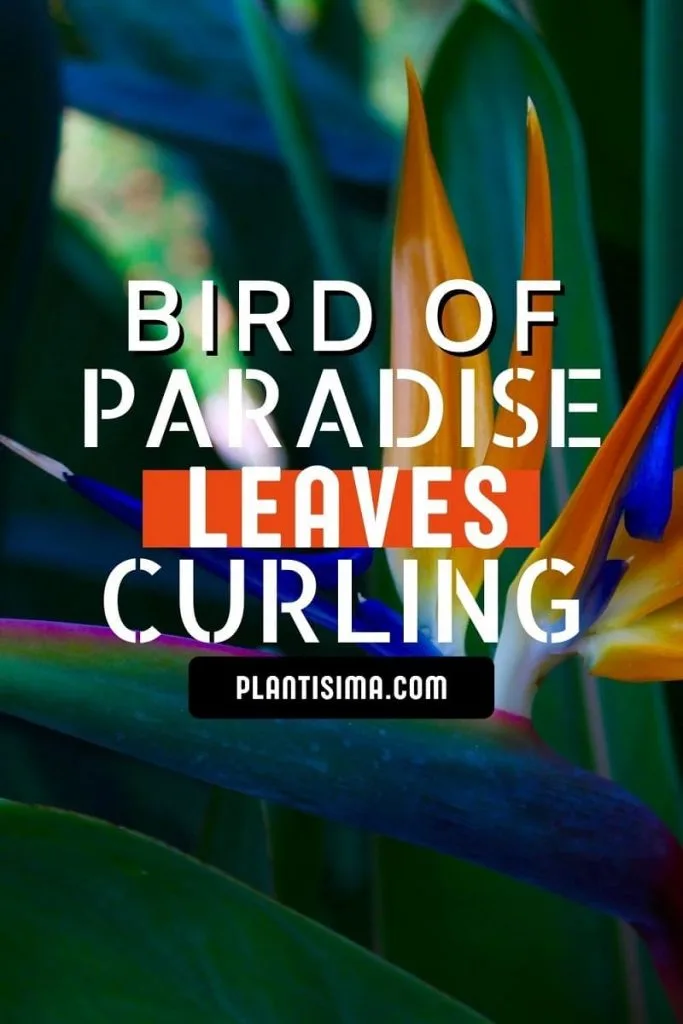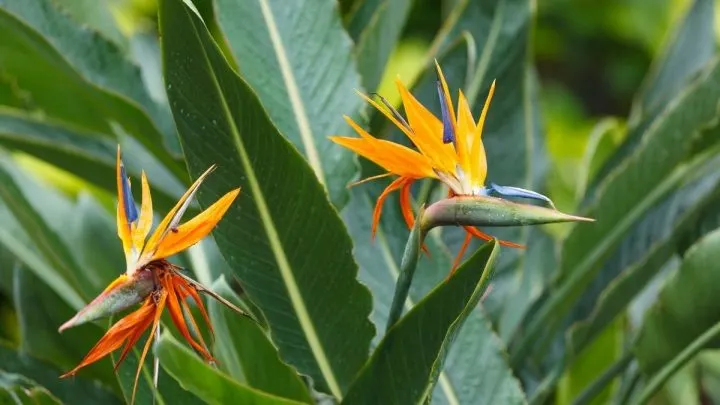We all know that taking care of plants is not easy, but with today’s article, I am sure that it will be easier for you to take care of your bird of paradise and the bird of paradise leaves curling problem.
Like any other plant, the bird of paradise will run into problems, and when you do not know how to solve them or what is the cause, I offer you this article that will answer all your potential questions.
Remember, whoever asks doesn’t wander! If you’re still wondering or are currently wondering, let’s get down to reading to find out more.
Bird Of Paradise Breathtaking Features
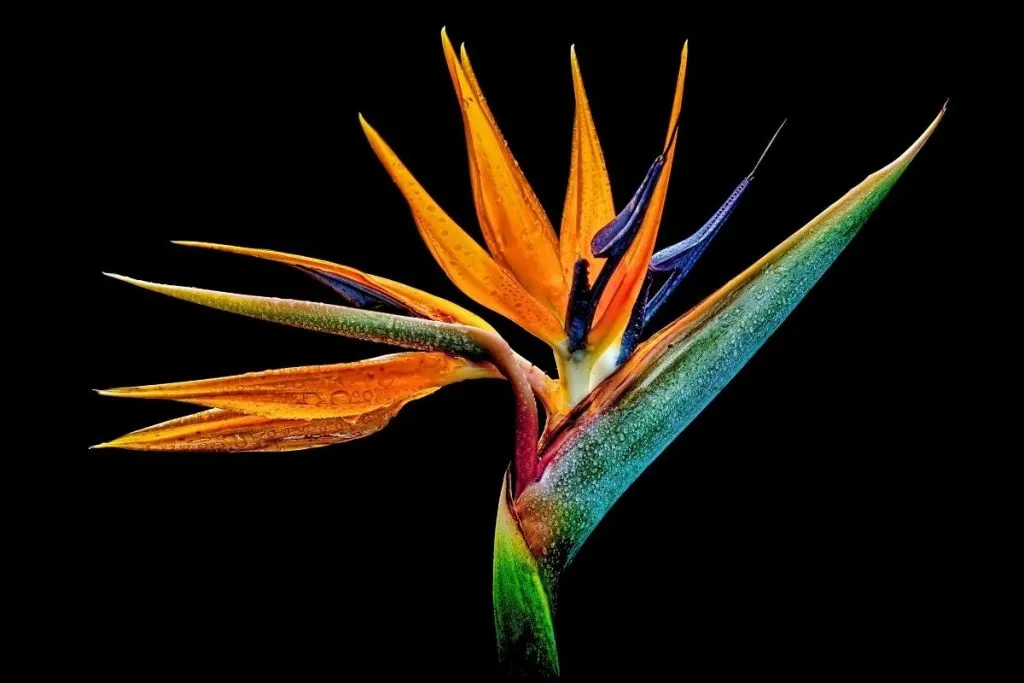
The bird of paradise is an evergreen plant of dense, bushy growth that, depending on the species, can grow up to 32 feet in height.
Its shiny, leathery leaves with a grayish-green surface are oval-lanceolate, resembling banana leaves. They can grow from 11 to 29 inches in length, with broadleaf blades up to 19 inches wide.
The leaves appear on solid elongated stalks at least 25 inches long, growing vertically and directly from a strong, branched root system.
These large, striking leaves make the plant attractive even when it’s not blooming, creating distinct structural effects and an irresistible tropical atmosphere both indoors and outdoors.
The genus was given the botanical name Strelitzia in honor of Queen Charlotte of Mecklenburg-Strelitz, the wife of King George III of England, a great lover of botany.
Since the middle of the 18th century, when it was brought to Europe, its popularity has not declined, making it one of the most sought-after houseplants and desirable garden decoration in areas where climatic conditions allow.
Why Is My Bird Of Paradise Leaves Curling up?
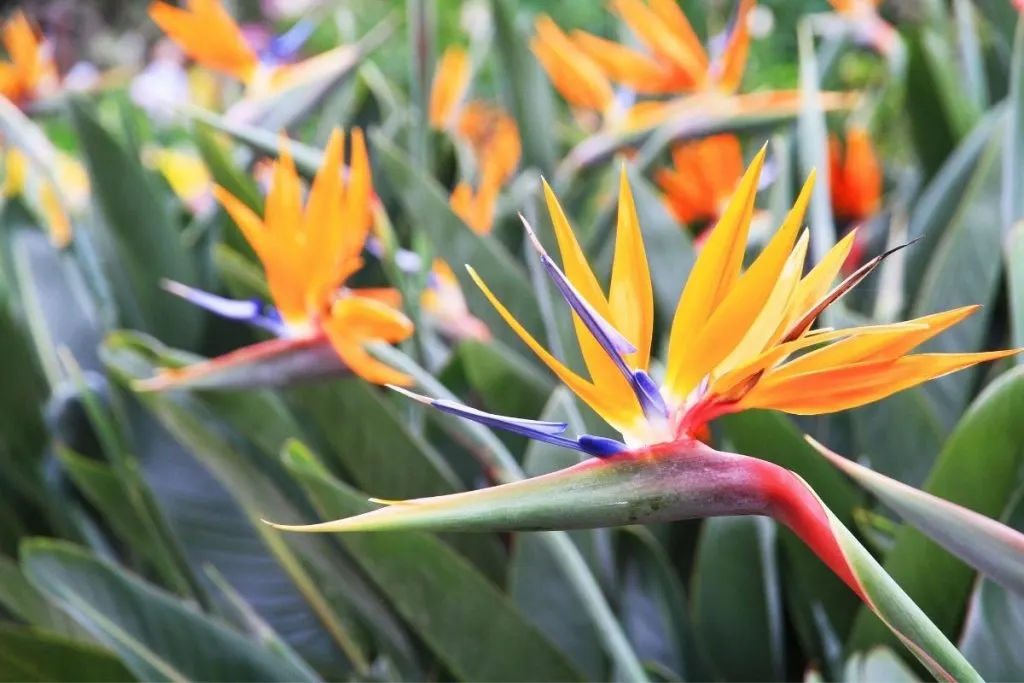
When you notice paradise plant leaves curling you know for sure that something isn’t okay with your plant.
What could cause paradise leaves to curl? We’re here to explain what is a cause curled leaves and how to fix them.
There are several varieties of birds of paradise, but each has substantial leaf-shaped blades that start as twisted tubes from the main body.
The leaves develop as they mature, but even older leaves will have some curves at the edges.
The bird of paradise is a tropical plant with an average length of 18 inches of leaves that grows from the main crown in a cluster.
A little twisting of the leaves on the bird of paradise is normal, but occasionally there will be more pronounced curvature and possibly other signs of damage.
Cultural Causes Of A Paradise Curling
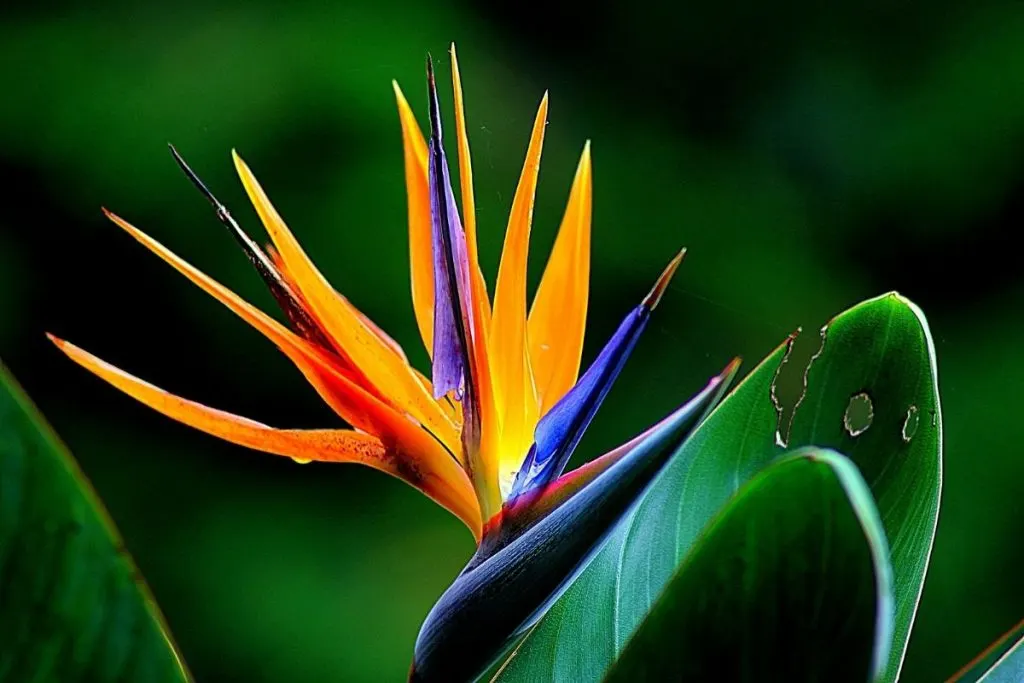
The Bird of Paradise is suitable for USDA plant zones of strength 10 and 11. It is not reliably hardy in zone 9, but you can grow it in a pot in colder zones in summer, as long as you move it indoors before cold temperatures arrive.
The leaves are thin at the edges and harder to run off in strong winds or with repeated bruising. Any number of things can cause the leaf to curl on a bird of paradise in inappropriate conditions.
- New plants need a lot of water at the beginning their newer leaves will curl in protest.
- Cool temperatures make the leaves curl inwards as protection.
- Poor soil and irregular soil pH will also show up as twisting leaves on a bird of paradise.
Bird Of Paradise Leaves Curling Indoors
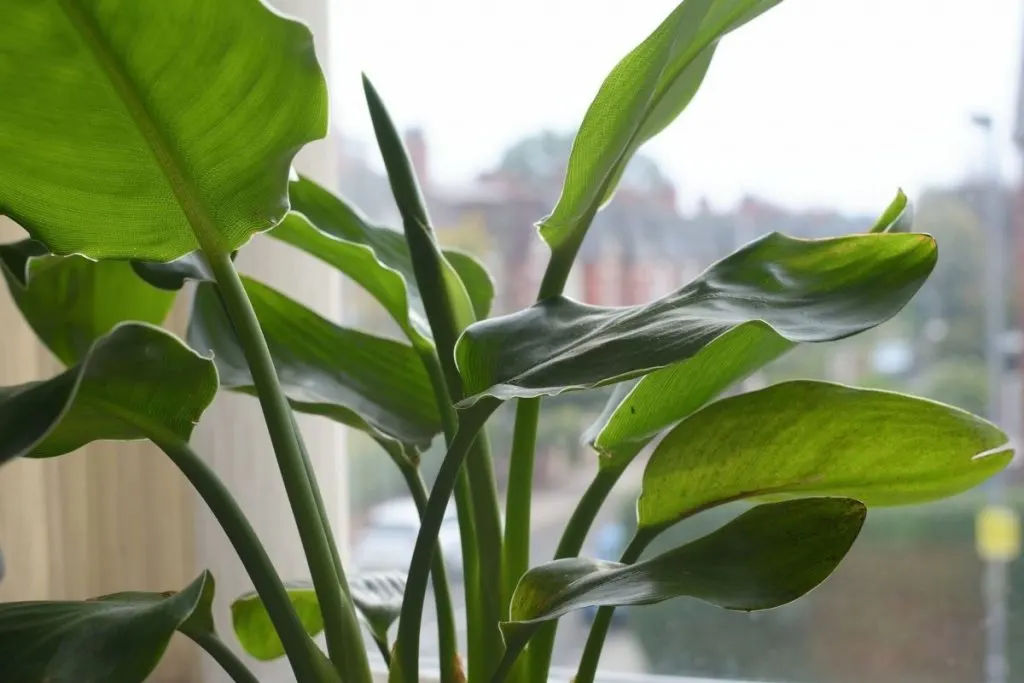
Bird of paradise container plants should be transplanted every few years or when they become attached to a pot.
New soil is important in container plants to help provide nutrients. It is also important to give the plant enough space for the roots.
If the plant is tied to the root, it interferes with its ability to absorb moisture and nutrients which can cause the leaves to curl on the bird of paradise.
For example, there is the other scenario as well that isn’t bad. If you see light green leaves curling, do not panic.
Those are just some new curling leaves because they’re growing, there is nothing wrong with your plant. Your plant suffering hasn’t begun.
Placing the plant near a window drain will affect the health of the leaves and allow the pot to dry for too long.
The leaves may also bend after transplantation or you might notice leaf curling, but will usually shrink within a few days after the transplant shock subsides.
How Do I Fix My Bird Of Paradise Curls?
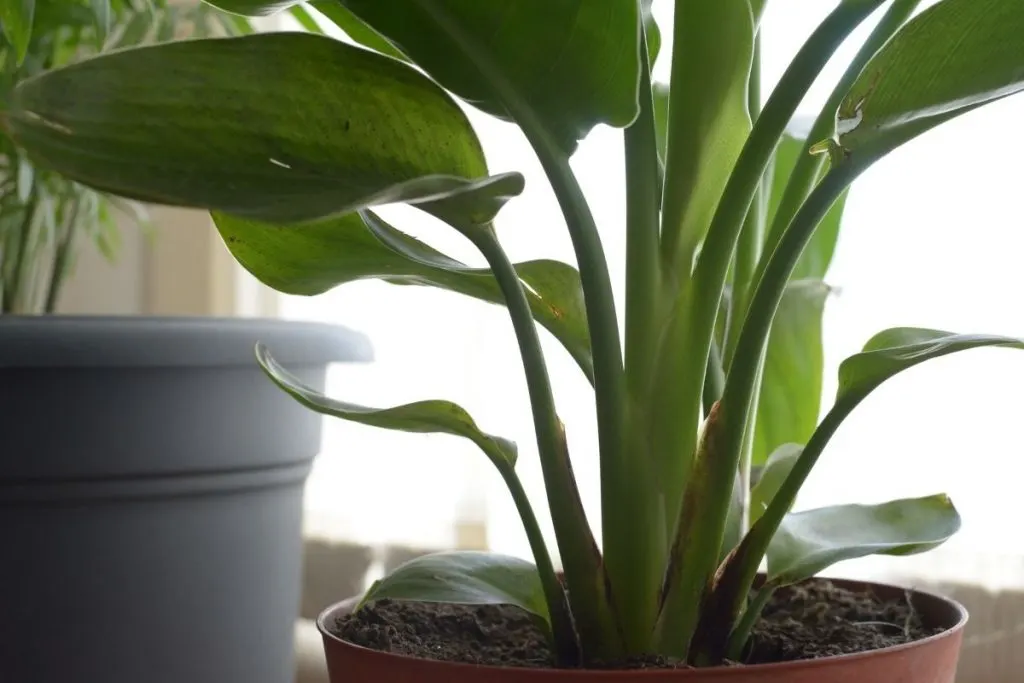
When you see leaves curling and you notice yellow leaves and brown leaves react. You’re doing something wrong, and above, you could’ve read about possible issues and causes.
Give it a few weeks to recover. Almost dying leaves aren’t so easy to recover, so be patient. Plant leaves for the plant are like lungs for us humans.
Inadequate watering, pest infestation, too much direct light, standing water, too much fertilizer, not taking care of brown edges, and lack of sun exposure are some of the main reasons that leave curl on this plant.
Indoor plants sometimes aren’t so easy to take care of, but with our guide and your persistence, it doesn’t have to be like that.
How To Take Care Of Bird Of Paradise Plants And Bird Of Paradise Leaves Curling

Despite their exotic appearance, Birds of Paradise do not require any special or excessive care. As long as you provide it with enough space, proper lighting, a well-drained base, moderate watering, and a warm environment, this long-lived, slow-growing plant will create a tropical atmosphere in your living space for years to come! Therefore, let’s see how to take care of it properly.
Too Much Light, Direct Sunlight, Or Indirect Light For The Bird Of Paradise?
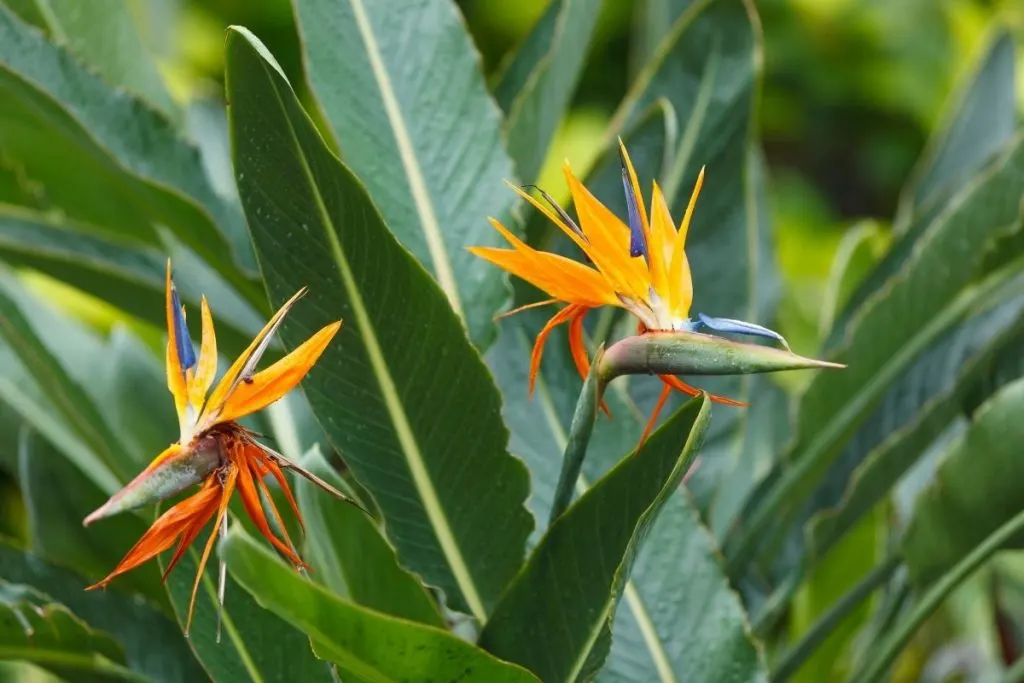
If you are growing the bird of paradise indoors, place it in a space as bright as possible where it will get a lot of indirect lighting. Ideal positions are glazed terraces or east windows.
A few hours of morning or afternoon sun has a beneficial effect, but positions, where the plant is exposed to direct sunlight at its zenith, should be avoided. The plant needs a minimum of 6 hours of light per day, in summer and winter.
The amount of light and direct sun that the plant receives directly affects its growth, overall appearance, and flowering. Plants that spend time in a poorly lit space will not bloom.
You can also add artificial light to solve the problem. You can hang the lamp above or place it on a small table next to the plant. Keep it for ten hours a day to make up for the lack of natural light.
Is Soil Moisture Good For Bird Of Paradise Leaves Curling?
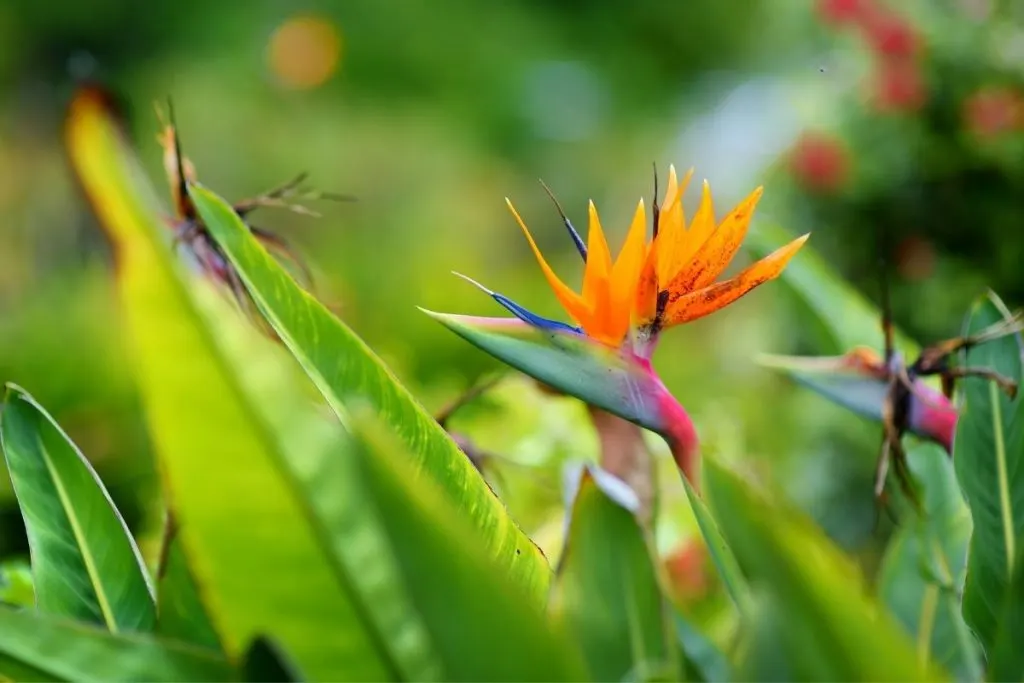
The watering regime always depends on the conditions in which it grows, primarily on exposure to light and room temperature.
These factors directly affect the rate of evaporation of moisture from the soil and dictate the frequency of watering.
In general, you can water the bird of paradise once a week from spring to autumn and once every ten days during the winter.
However, this is just a framework because watering needs to be adapted to the specific plant and conditions.
On the other hand, over-soaking the substrate is even more dangerous. Water that the plant cannot use causes its root and eventual decay. From the end of autumn, gradually reduce watering, allowing the substrate to dry.
Shortening the days in the winter months as well as lower temperatures slow down the plant’s metabolism.
This is the period when the plant is dormant and the water evaporates more slowly from the substrate, so there is no need to water it often.
And one more thing: the Bird of Paradise does not like tap water! It contains salts and chloride that your plant cannot stand.
Therefore, when hydrating your plant, use standing, soft water, distilled water, or rainwater if you have the opportunity to collect it.
Soil Quality Matters By Bird Of Paradise Leaves Curling
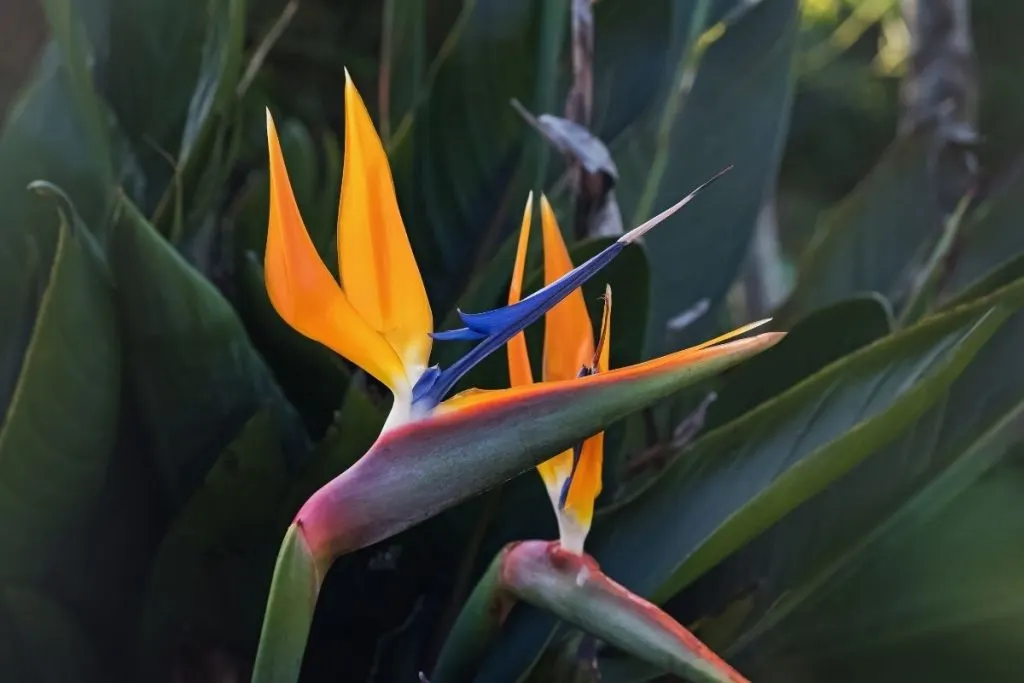
When we talk about soil, the bird of paradise plant is not picky as long as the substrate is well-drained and does not retain water longer than it should. Avoid soggy soil for a bird of paradise plant.
In other words, you can grow it in a standard multi-purpose substrate intended for houseplants to which you could add a handful of compost or loam.
Make sure to make a drainage hole on the bottom of your pot. Its role is very important for your plant. It helps you not to achieve too much moisture for your plant (what your plant hates).
Poor soil quality can ruin your plant completely. Not too well-draining soil, but not soil dry as well. As mentioned, try an additive such as peat moss for example.
This additive prevents soil compaction, increases its nutritional value, and affects the pH value of the soil.
Although it can grow in ph-neutral soils, the bird of paradise plant prefers the slightly acidic one with an ideal pH range of 5.5 to 7.5.
Humidity Conditions For Your Tropical Plant And Leaves Curling
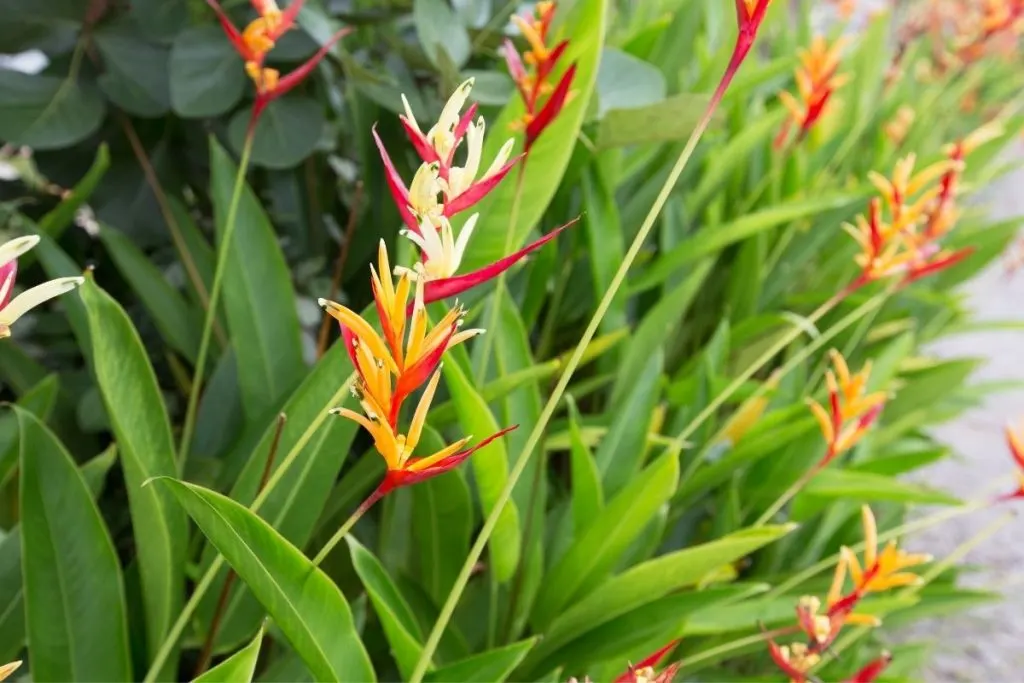
Like all the other plants of similar origin, the bird of paradise plant loves elevated levels of humidity in its environment.
Although it is quite adaptable and can withstand even a standard humidity level of 30 to 40% (still not a low humidity) it will still feel better and grow better if that level is higher than average and reaches at least 60%.
You can choose one of these methods below:
- Fogging – Spray the leaves of the plant often with lukewarm stagnant water at room temperature. This measure can be important for the health of the plant, especially in the winter months when space heating causes excessive drying of the air, as well as in summer during dry and hot days.
- Pebble container – This is another easy way to change the microclimatic conditions in the plant environment. Place the pot with the plant on a tray in which you have placed balls of expanded clay or coarse gravel and fill it with water. Gradually evaporating the water in the pot will help the bird of paradise feel at home.
- Humidifier – This simple device is a practical solution for those with many tropical plants or plants that require tropical-like conditions. Set it to the desired value and you can forget about the humidity problem!
Fertilizers Are Great But Over Fertilization Isn’t For Bird Of Paradise Leaves Curling
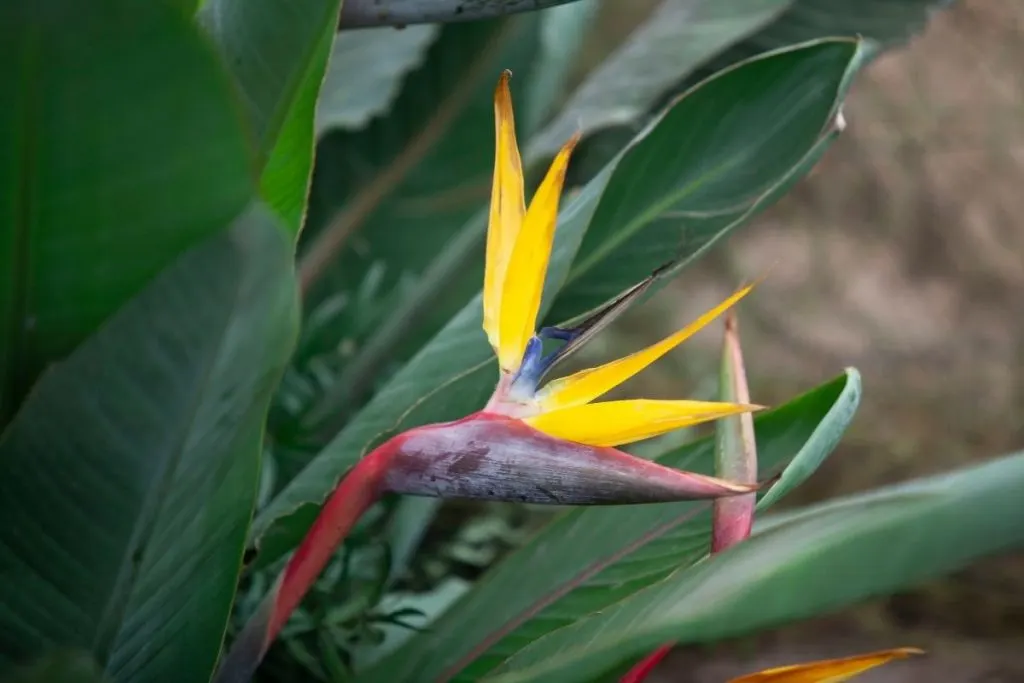
As already mentioned, the bird of paradise plant has a large, branched root that quickly consumes nutrients from the substrate.
Therefore, additional nutrition is one of the vital measures in maintaining health and abundant flowering.
For this purpose, you can use liquid, standard fertilizer for houseplants diluted to half the recommended dose.
In moist soil, every fifteen days from spring to autumn when the plant grows intensively and blooms add a fertilizer that is nutrient-rich and dissolved in water.
If you are a supporter of natural fertilizers, then you can feed the plant with manure. In the spring, before the start of the season, bury one handful of this material in the soil around the plant, taking care not to damage the root so that the manure can’t come into direct contact with the root ball.
Bird Of Paradise Sudden Temperature Changes: Like Or Dislike
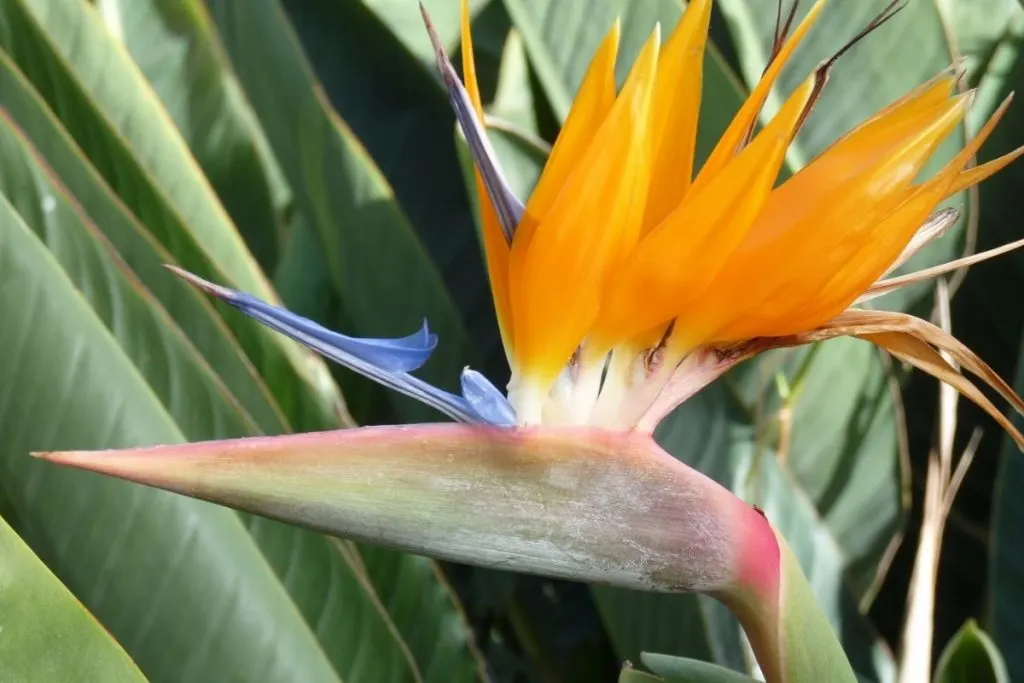
The bird of paradise is sensitive to low temperatures and cannot thrive in a room where the temperature drops below 50 F.
The ideal temperature range is between 55 and 70 F throughout the year. So keep the bird of paradise in warm temperatures during the winter.
This plant doesn’t like sudden temperature changes. Change of temperature stress bird of paradise. Your tropical plant and most tropical plants don’t like air conditioning vents or cold air.
The bird of paradise is grown as a houseplant in a flower pot. You can move it to the garden or terrace, during the summer.
However, when nighttime temperatures approach 30 and 40 F, you should bring the plant into the house in a sheltered and warm place.
Be Careful With Transplant, You Don’t Want A Transplant Shock
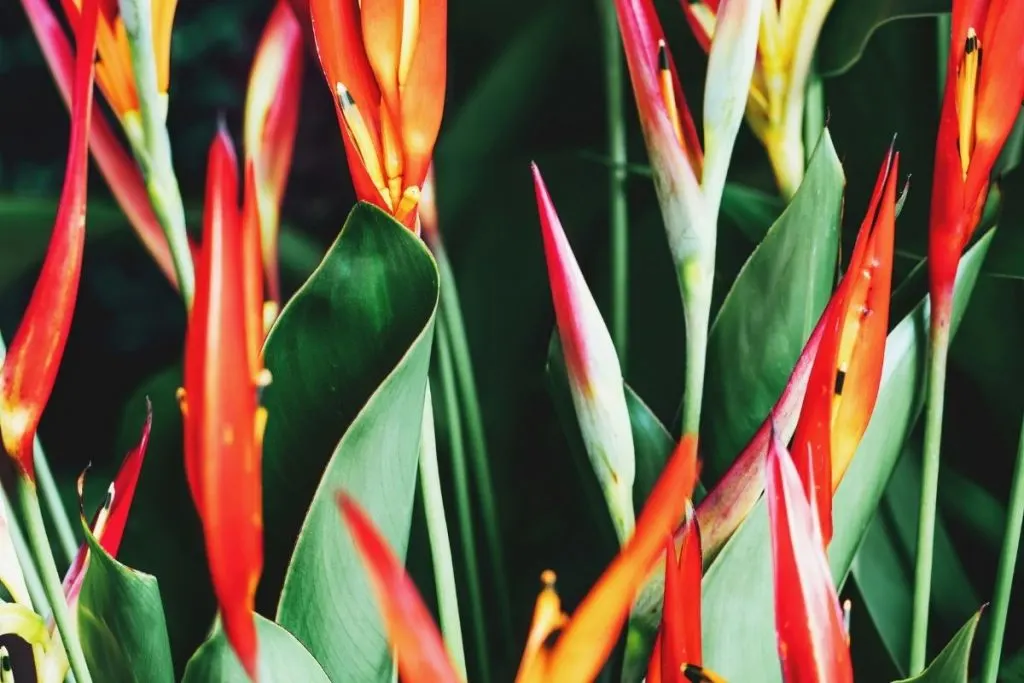
The bird of paradise plant is a plant that you can successfully grow in a large pot, in which the root will have enough space.
Therefore, you will need a stable tank with a volume of at least 2.11 gallons. The tank must have openings in the bottom to prevent the dangerous accumulation of water in the pot.
When planting your bird of paradise, be sure to put a layer of coarse gravel or broken tiles on the bottom over the opening of the pot, which will have the function of drainage and enable efficient drainage of excess water.
This robust plant does not like constant transplanting, and grows better and blooms profusely if the roots are partially compacted in a pot.
Therefore, transplant it every second or third year when the roots appear through drainage holes in a 7 or 8-inch larger pot that has been pre-filled with fresh substrate.
How To Improve Bird Of Paradise Growth And Propagation
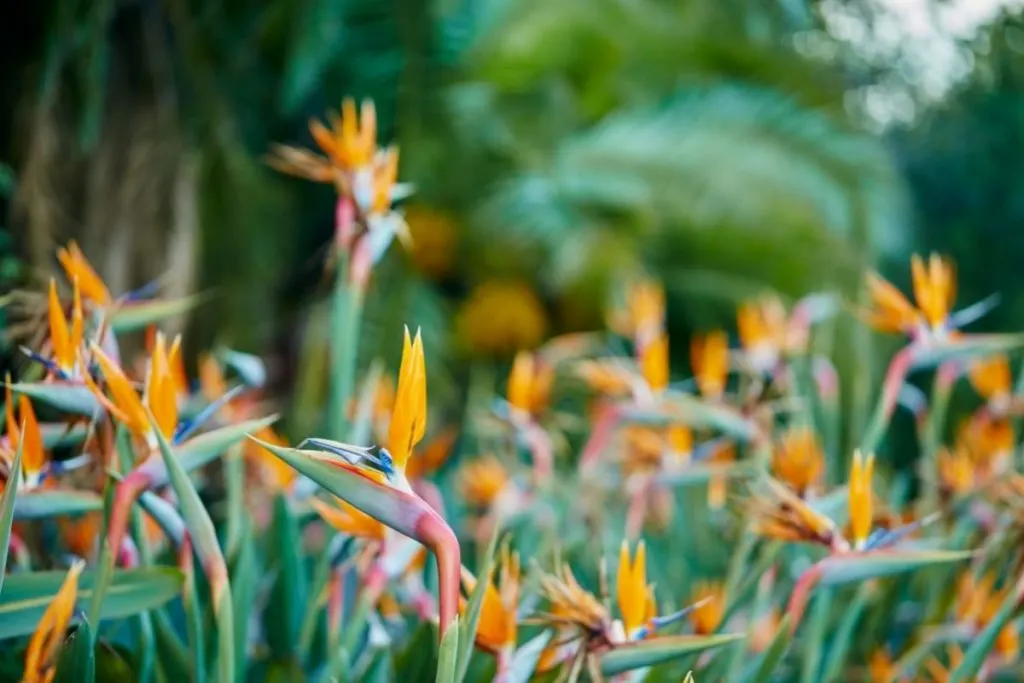
To bloom for the first time, a bird of paradise plant must reach a stage of maturity that occurs in four to six years under optimal growing conditions.
If that sounds too long to you, let’s say the bird of paradise that bloomed in the room is a scene worth the wait.
Moreover, once it starts to bloom, it gives more and more flowers every year. Also, a mature plant produces seeds from which new plants can reproduce. You can be excited about its growing season.
Potential Problems For Your Paradise Plant
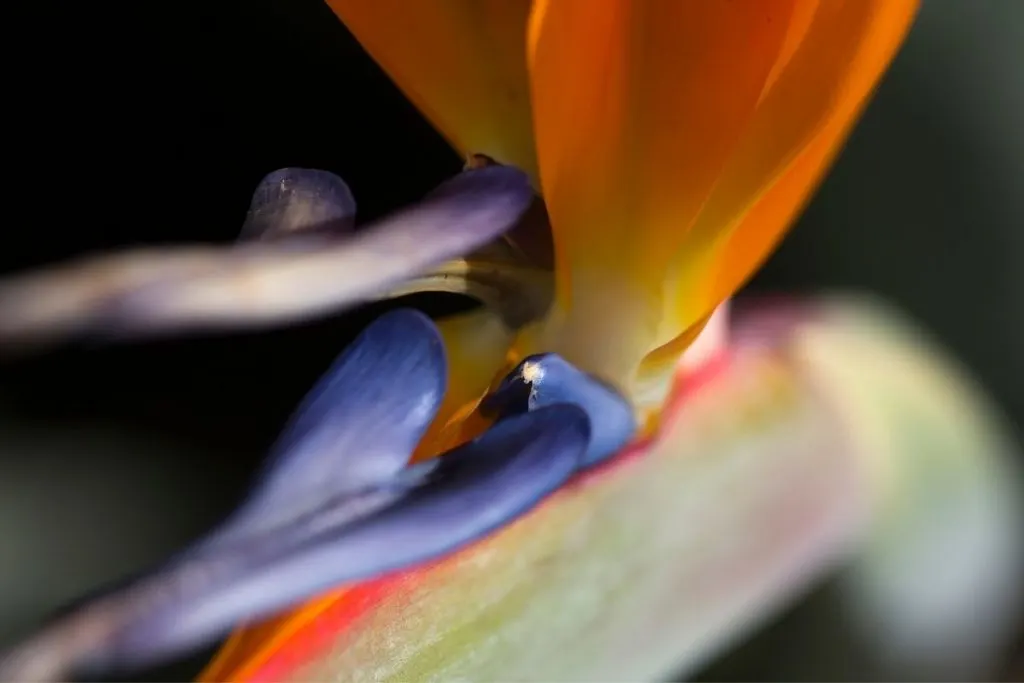
The bird of paradise plant is a hardy plant that adapts to household conditions and is not particularly prone to diseases or pests.
Most of the problems that can occur are related to an unsuitable environment or unfavorable growth factors. Here are the most common ones:
- Brown spots or spots on the leaves appear when you use tap water or when the substrate is too wet and there is not enough air between the leaves. Use soft water, ventilate the area, and water the plant only when the substrate is dry to the touch.
- Dry leaf tips indicate a low amount of moisture in the space. Fry the plant regularly and clean its leaves with a damp cloth or sponge. The plant will enjoy this refreshing treatment as removing dust and particles accumulated on the leaves makes breathing easier.
- Yellow, leaves that turn brown, flabby, mushy leaves are a clear sign of excess water in the soil. Cut off those leaves and pay attention to the watering schedule. If you do nothing or leave the plant to sit in a wet substrate, the next stage is root rot, which leads to plant loss. Consequently, remove the plant from the moist substrate, air dry it briefly and replant it in the fresh substrate. Do not water it for the first seven days.
Stunted growth is usually the result of bad lighting or poor soil in which there are not enough nutrients. Light and fertilization play a vital role in the formation of flowers and the dynamics of growth of this plant. So provide him with regular nutrition and proper lighting.
Root Rot By Bird Of Paradise
Too much direct sunlight and too much water can ruin your plant’s leaves. But even worse, it can kill its rot and then, oh-oh.
From other pests, you can protect your plant with neem oil, rubbing alcohol, and other organic helpers, but when it comes to too much direct sun and too much water, that is your responsibility.
Follow the watering schedule, make sure you’re not overdoing it and then I promise, you won’t need any brown tips for your plant.
Colorful Flowers Of Paradise Plants
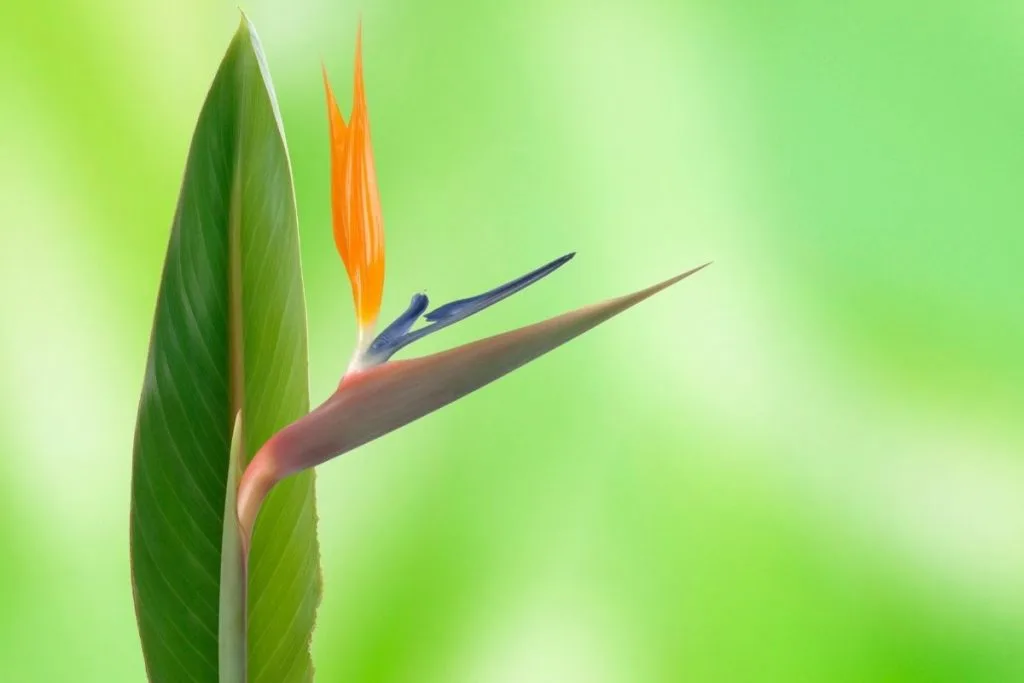
Although this crane flower can retain its tropical charm without flowering, what makes this plant popular all over the world is its flowers’ unique shape.
These wondrous flowers appear on long stalks from a thickened horizontally placed beaked house, resembling intensely colored orange and blue-purple tufts on the crane’s head.
Five or six flower capsules appear on each stem, and each bush produces many new ones, which can extend the flowering season to six months.
Due to its durability, resilience, and longevity, the bird of paradise flower is one of the best-selling cut flowers in the world. It stays fresh in the vase with water for about twenty days!
Orange Flowers Treat Bird Of Paradise
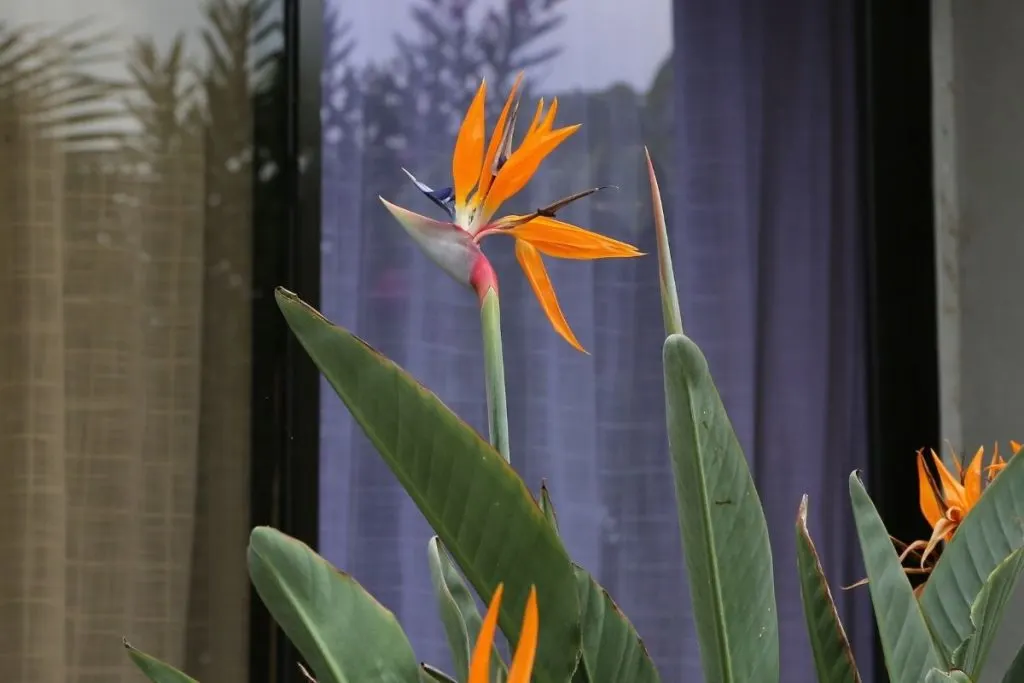
The most commonly bred species of bird of paradise is the so-called Strelitzia Reginae, the royal strelitzia as its Latin name suggests.
It is popular for its stunning, vibrant orange and purple flowers and manageable size as it grows 4 feet indoors and 3 to 6 feet outdoors.
Its leaves are more reminiscent of boat pedals that grow densely next to each other on long stalks. Each leaf grows 9 inches long and 7 inches wide, forming a dense green crown.
White Bird Of Paradise
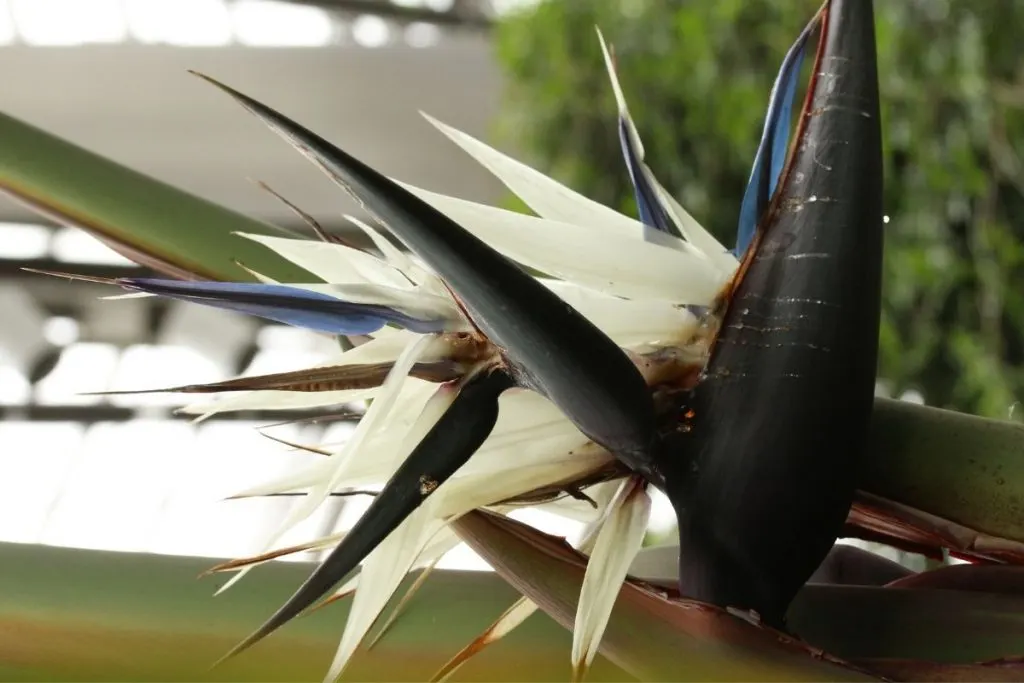
Another popular species is Strelitzia Nicolai, also known as the white bird of paradise. It is a big plant that can even grow in the shape of a tree in nature, it can reach 16 feet in height and 9 feet in width.
Due to its size and a big need for light, the plant is more often grown outdoors or in greenhouses.
It has large leaves like a banana with short stalks, and flower capsules that are dark purple, creating a dramatic contrast with the white leaves of the flowers.
